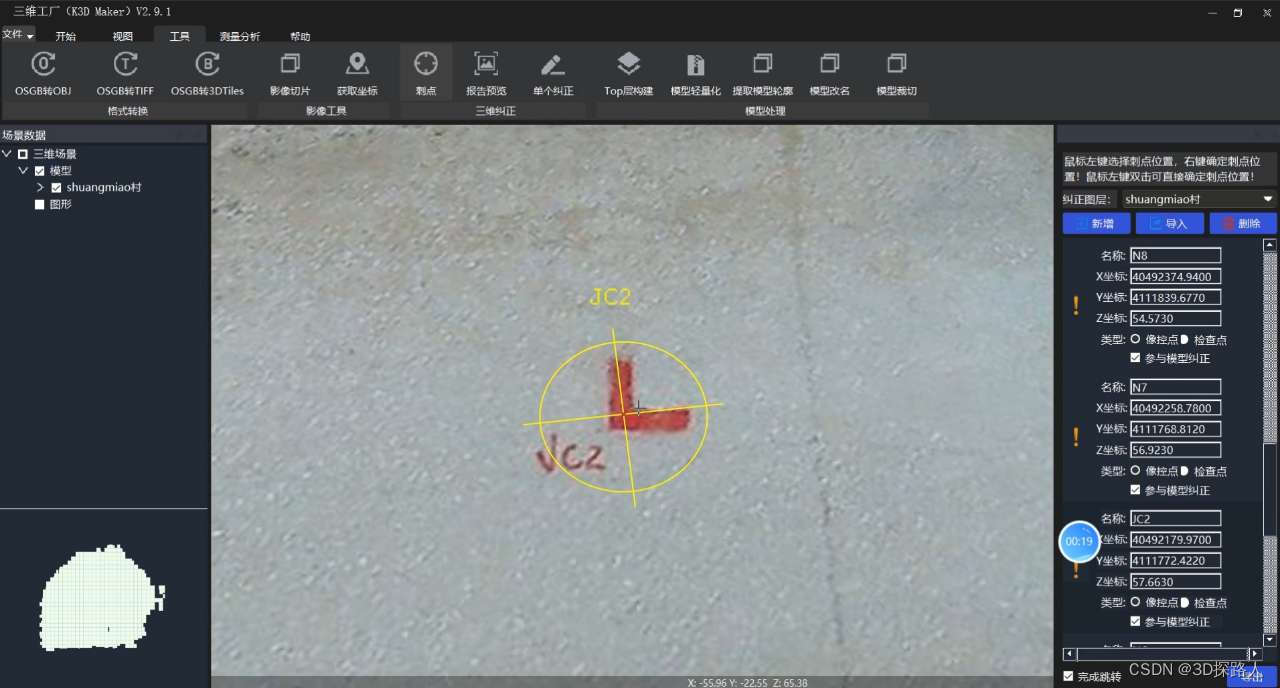Discussion on three-dimensional model (3D) O BJ format lightweight cloud processing technology method

The lightweight cloud processing technology of 3D models in OBJ format can perform large-scale and efficient processing on cloud servers to reduce file size, increase loading speed and reduce transmission costs. This article will explore the method of lightweight cloud processing technology for 3D model OBJ format, and analyze its role in data transmission, compression algorithm selection, parallel processing and scalability.
First, cloud processing can effectively reduce the amount of data transmission and reduce network bandwidth requirements. For large-scale 3D models, transferring directly from the local device to the client may consume a lot of time and bandwidth resources. By uploading the OBJ format model to the cloud server and taking advantage of cloud computing and network, the model can be lightweight processed and then the processed model can be transmitted to the client. In this way, while ensuring data security, the amount of data transmission is reduced, the transmission speed is accelerated, and the transmission cost is reduced.
Second, cloud processing involves selecting appropriate compression algorithms and parameters to achieve efficient lightweight processing. For 3D models in OBJ format, there are a variety of compression algorithms to choose from, such as LZ77, DEFLATE, LZMA, etc. Each algorithm has different characteristics and compression efficiency. By evaluating and comparing the compression algorithms of the models in the cloud environment, the most suitable algorithm can be selected and the optimal parameter configuration can be determined. This enables higher compression ratios and reduced file sizes while maintaining model quality.
In addition, cloud processing technology can also achieve parallel processing and improve processing efficiency. Large-scale 3D models usually require a lot of computing resources and time to be processed lightweight. By making full use of the parallel computing capabilities of the cloud server, the model can be divided into multiple subtasks and processed simultaneously. In this way, the processing time can be greatly shortened and the processing efficiency can be improved. At the same time, by dynamically allocating computing resources, the scale of parallel processing can be adaptively adjusted according to the complexity and priority of the task, further improving efficiency.
In addition, cloud processing technology also has good scalability. By building a distributed processing system in a cloud environment, processing capabilities can be expanded by adding more computing nodes and server resources. This allows processing of larger 3D models to accommodate growing application requirements. At the same time, the cloud server provides a flexible resource management and allocation mechanism, which can adjust the processing scale and resource allocation at any time according to needs to meet the processing requirements in different scenarios.
To sum up, the lightweight cloud processing technology of 3D model OBJ format can reduce the amount of data transmission, increase the loading speed and reduce the transmission cost by processing it on the cloud server. Among them, selecting appropriate compression algorithms and parameters, implementing parallel processing, and having good scalability are key technical methods. By taking full advantage of cloud computing and network advantages, these technical methods provide efficient and reliable solutions for lightweight processing of 3D models, and promote the application development of large-scale 3D model data in the cloud.
Introduction to 3D Factory Software

3D Factory K3DMaker is a professional processing software with functions such as 3D model browsing, analysis, lightweighting, top-level merge construction, geometric correction, format conversion, color correction and cutting. Operations such as mesh simplification, texture compression, and level optimization of 3D models can be performed to achieve lightweight 3D models. The lightweight compression ratio is large, the model is lightweight and efficient, and the automatic processing capability is high; a variety of algorithms are used to perform geometric precision correction processing on the 3D model, with high accuracy, fast processing speed, and support for ultra-large models; excellent data processing and conversion tools support the Convert OSGB format 3D models to 3DTiles and other formats, which can be quickly converted. Come and experience it. See the illustration for the download address.


